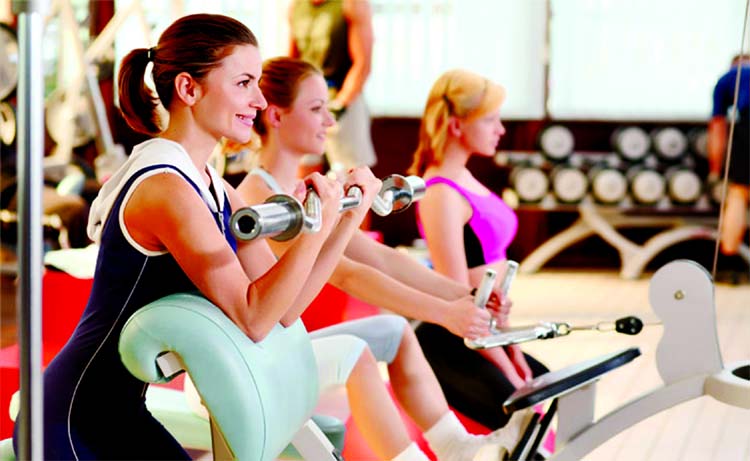
Weekend Plus Desk :
Exercising four to five times a week can reverse damage to sedentary, ageing hearts and help prevent risk of future heart failure, a study has found. To reap the most benefit, the exercise regimen should begin by late middle age (before 65) when the heart apparently retains some plasticity and ability to remodel itself, researchers said.
Exercise needs to be performed four to five times a week. Two to three times a week is not enough, researchers said.
“Based on a series of studies performed by our team over the past five years, this ‘dose’ of exercise has become my prescription for life,” said Benjamin Levine, from University of Texas in the US.
“I think people should be able to do this as part of their personal hygiene – just like brushing your teeth and taking a shower,” Levine said.
The regimen included exercising four to five times a week, generally in 30-minute sessions, plus warm-up and cool-down. The more than 50 participants in the study were divided into two groups, one of which received two years of supervised exercise training and the other group, a control group, which participated in yoga and balance training.
At the end of the two-year study, those who had exercised showed an 18 per cent improvement in their maximum oxygen intake during exercise and a more than 25 per cent improvement in compliance, or elasticity, of the left ventricular muscle of the heart, Levine said.
Sedentary ageing can lead to a stiffening of the muscle in the heart’s left ventricle, the chamber that pumps oxygen-rich blood back out to the body, he said. “When the muscle stiffens, you get high pressure and the heart chamber doesn’t fill as well with blood. In its most severe form, blood can back up into the lungs. That’s when heart failure develops,” said Levine.
Earlier research showed that left ventricular stiffening often shows up in middle age in people who do not exercise and are not fit, leaving them with small, stiff chambers that cannot pump blood as well.
However, the researchers also found that the heart chamber in competitive masters-level athletes remains large and elastic, and that even four to five days of committed exercise over decades is enough for noncompetitive athletes to reap most of this benefit. n
Exercising four to five times a week can reverse damage to sedentary, ageing hearts and help prevent risk of future heart failure, a study has found. To reap the most benefit, the exercise regimen should begin by late middle age (before 65) when the heart apparently retains some plasticity and ability to remodel itself, researchers said.
Exercise needs to be performed four to five times a week. Two to three times a week is not enough, researchers said.
“Based on a series of studies performed by our team over the past five years, this ‘dose’ of exercise has become my prescription for life,” said Benjamin Levine, from University of Texas in the US.
“I think people should be able to do this as part of their personal hygiene – just like brushing your teeth and taking a shower,” Levine said.
The regimen included exercising four to five times a week, generally in 30-minute sessions, plus warm-up and cool-down. The more than 50 participants in the study were divided into two groups, one of which received two years of supervised exercise training and the other group, a control group, which participated in yoga and balance training.
At the end of the two-year study, those who had exercised showed an 18 per cent improvement in their maximum oxygen intake during exercise and a more than 25 per cent improvement in compliance, or elasticity, of the left ventricular muscle of the heart, Levine said.
Sedentary ageing can lead to a stiffening of the muscle in the heart’s left ventricle, the chamber that pumps oxygen-rich blood back out to the body, he said. “When the muscle stiffens, you get high pressure and the heart chamber doesn’t fill as well with blood. In its most severe form, blood can back up into the lungs. That’s when heart failure develops,” said Levine.
Earlier research showed that left ventricular stiffening often shows up in middle age in people who do not exercise and are not fit, leaving them with small, stiff chambers that cannot pump blood as well.
However, the researchers also found that the heart chamber in competitive masters-level athletes remains large and elastic, and that even four to five days of committed exercise over decades is enough for noncompetitive athletes to reap most of this benefit. n

